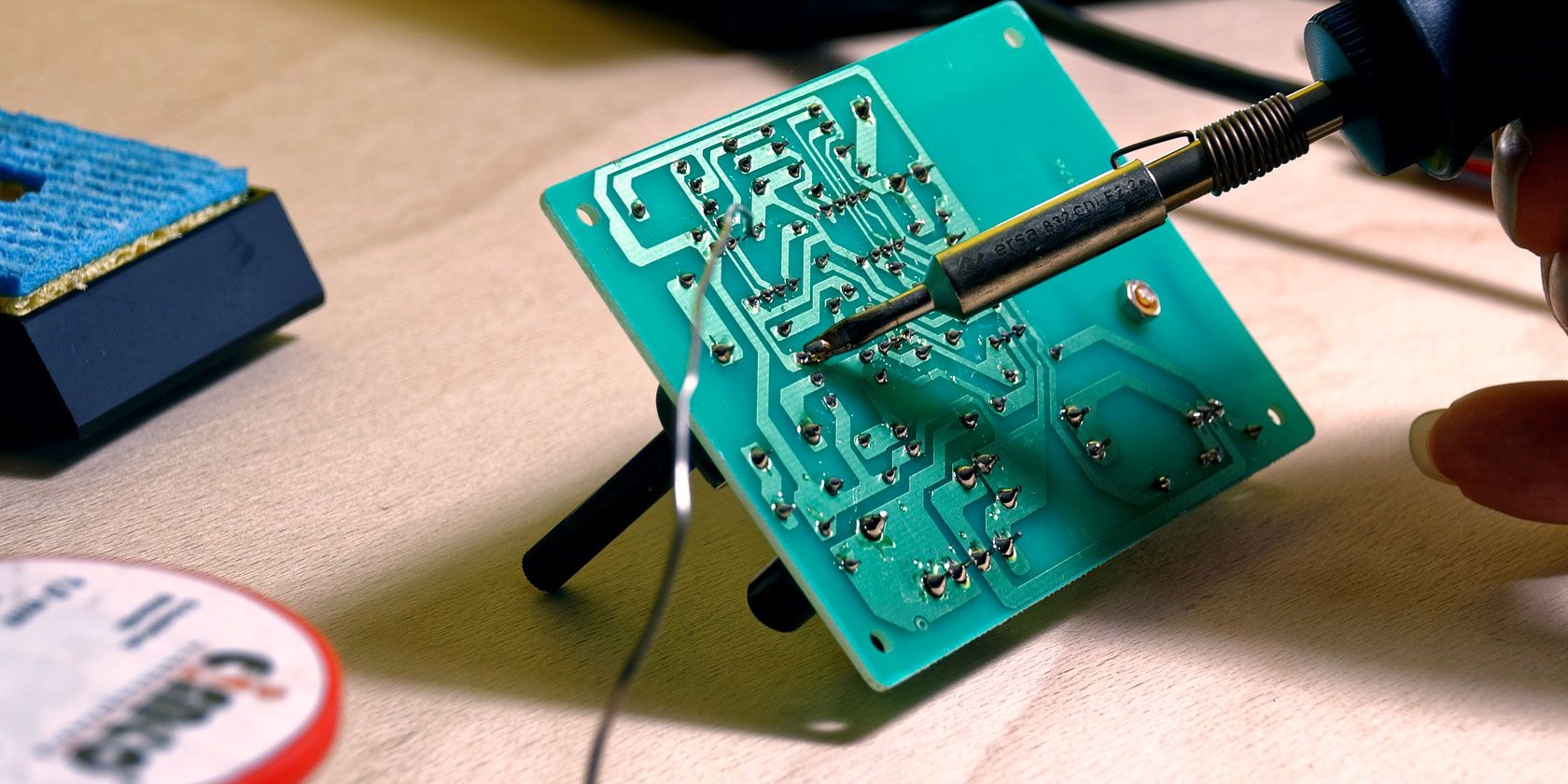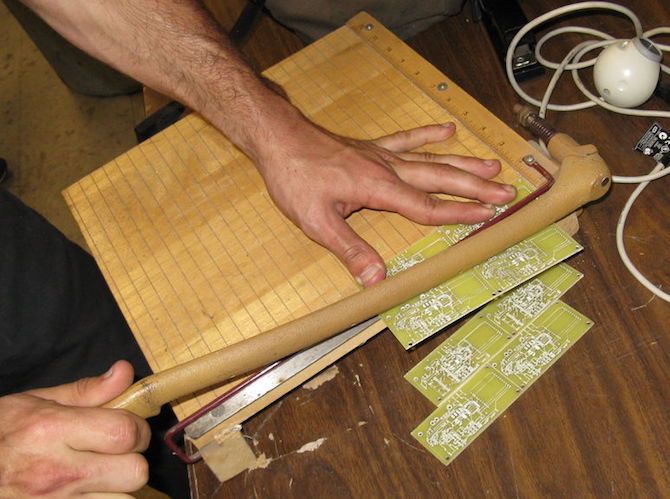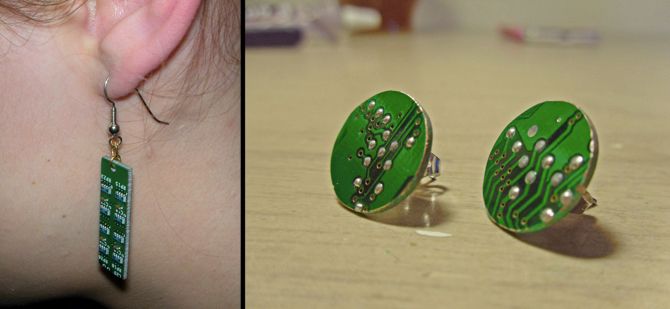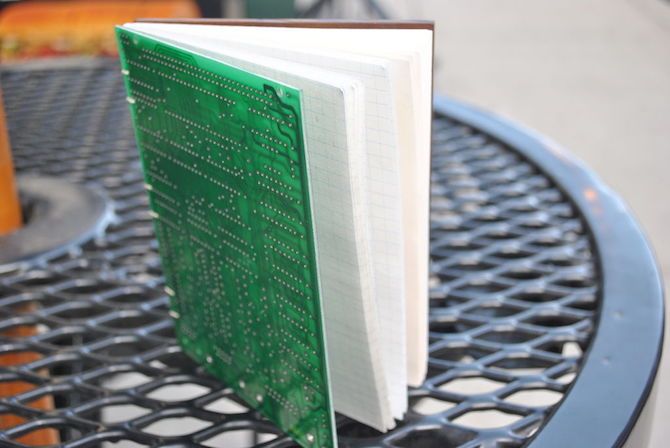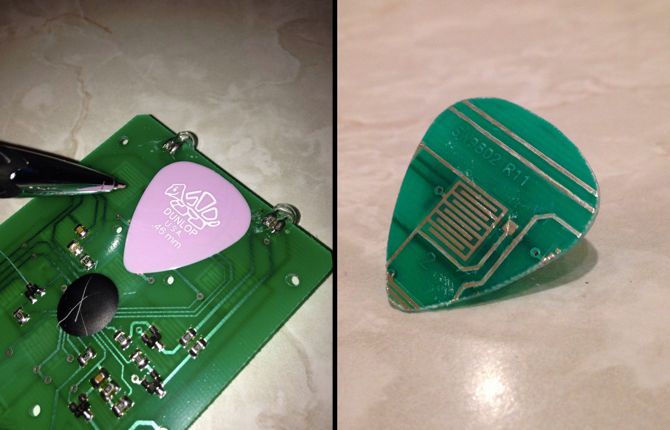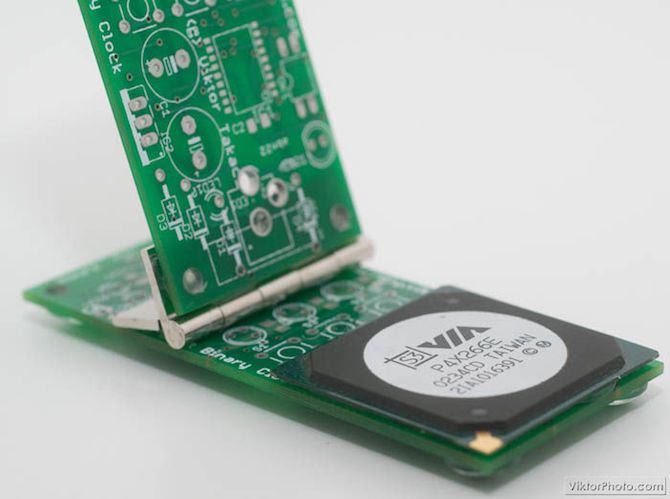What can you do with old motherboards, unused circuit boards, or non-functioning Arduinos and Raspberry Pis? Turns out, you can do a lot more than throwing them in the trash. Roll up your sleeves, it's time to get creative and hands-on to put those old boards to new uses.
How to Cut Circuits
Some of the projects listed below require you to cut old circuit boards. The ideal tool for the job is a circular blade saw or a Dremel. But that's not a common tool in most households. There are two other options.
You can use a paper cutter (with a sharp blade) to cut circuit boards into straight lines. It's perhaps the best way to avoid splinters or jagged edges. Nonetheless, it's best to sand the board afterwards. Sanding is an essential DIY skill, so take the time to learn it.
The other method is the most easy tool to find in homes, but well, it's a bit arduous. A sharp blade can cut the board to, but you will need to put in some elbow grease and scratch the board back-and-forth with the blade. It's best to use a ruler (or any other steady object) along with the blade to keep the lines straight. Make sure you scratch on both sides, as the video above shows, before you snap the board.
Now that you know how to cut a circuit board, grab any dysfunctional gadget you have, rip out its circuit board, and turn it into one of these cool projects.
1. PCB Earrings: Wear Your Geek Quotient
If you can cut the circuit board, you can turn it into gorgeous jewellery. Wear your geek badge with pride, we say. That's its sole purpose anyway.
Instructables user CameronSS made a guide for long earrings made out of rectangular circuit board pieces. You'll also need earring hooks and jump rings for her method, which can be purchased online. Make sure you pick the right part of the circuit board, such that the earrings look like a set. You don't want soldered parts poking another hole in your ear, so pick only the etched parts.
Another Instructables user Maramas turned her circuit board into stud earrings. It's more understated and a slightly easier project. No drilling required here, it's all about using a strong glue.
Remember, for either of these projects, you need to sand the edges to make them smooth. Or don't, what do I care -- you never listen to your mother anyway.
2. PCB Journal: Who Says Paper Is Dead?
Here's a whole new way to get started with journaling. With the added benefit of making terrible dad jokes about your new "digital journal".
Choose a decent sized circuit board, such that it would be the right size for a book you would write in. Then it's a simple matter of cutting a piece of wood to match it, according to TeslaTeslaTesla. That said, if you have two identical circuit boards, you can use both of them as the front and back covers, ditching the wood altogether.
Cut papers to match the size of your "book", bind it all together, and voila. You have the coolest looking journal around. Remember kids, the definition of "cool" is subjective.
3. PCB Desk Clock: About Time
Nothing says "Forever Alone" like ditching the clock at your work desk and replacing it with a clock made out of an old circuit board. But at least you'll be able to count down the exact seconds of your solitude with a funky metal clock.
Much like the creative projects for old hard drives that we saw earlier, making a circuit board desk clock is the easiest thing. All you need is a quartz clock movement and hands set, and a set of standard batteries. A drill will help to make a hole in the board, but you don't need to buy that. Go to any hardware shop and ask them to drill it as a favor, or borrow it from your grumpy grandpa's toolbox as he rants about how kids today don't fix anything themselves. Darn whippersnappers.
It will be difficult to mark the hours on a circuit board. Instructables user cXrisB used clear bumper stickers, but they don't look too good. Stickers are a good idea though. As long as the hands can rotate freely, get creative with how you mark the hours.
4. PCB Plectrum: Never Buy a Guitar Pick Again
Psst, I'll let you in on a secret. Can't find your guitar's plectrum? There's a reason for that. There's a large-scale global con, masterminded by guitar pick manufacturers. They hire invisible pixies to steal plectrums across the world, so hapless guitarists have to buy more. But the humble circuit board is going to foil their nefarious scheme.
In one weekend project, you can turn a large circuit board into an endless supply of picks. Use any plectrum to trace a shape on the board, then cut it with one of the methods shown above. A sharp blade is going to work best for this, unless you're going for a straight-edged plectrum. You're one step closer in your quest to become a guitar god.
The trick in this one is sanding it. Oh man, you'll need to spend some serious time on that. You can't leave any soldering intact on this bad boy, it has to be completely removed. The etching is fine, of course. Round off the edges, raise your hands to the rock'n'roll gods, and windmill it down to send the Plectrum Pirate Pixies away for good.
5. PCB Smartphone Stand: Because You Can
The PCB smartphone stand is perhaps the most functional of all these projects. That not only says a lot about the projects, but about us as well. You for reading so far, me for writing even further. We're in this together now, don't abandon ship.
You'll need two pieces of circuit boards: cut a large one or use two separate ones. The boards should be roughly a little smaller than the length and width of your smartphone. You'll also need a cool-looking chip from some old circuit. Oh, and a standard door hinge, along with lots of strong glue.
Choose one board as the "bottom", and mount the hinge on it, backwards. On the other flap of the hinge, mount the second board, such that it forms an angled smartphone stand. Glue the chip on the bottom board, so that it holds the phone and prevents it sliding off.
It's ridiculous, it's fun, and it's one of those projects where when someone asks why you did it, you smugly reply, "Because I can". Tiny accomplishments like DIY smartphone stands will help us get out of bed tomorrow, my friend.
Do You Hoard Your Junk Gadgets?
The internet has no shortage of ideas for circuit boards. Some are crazy enough to turn them into artistic insects, while others have much more simple ideas like a coaster set or a mousepad. But for all these, you need those junk gadgets lying around. Which brings us to the larger point.
Do you hoard all your old gadgets, hoping to turn them into something in the future? Do you still have old PCs just lying around? Or do you recycle them once you've upgraded?

